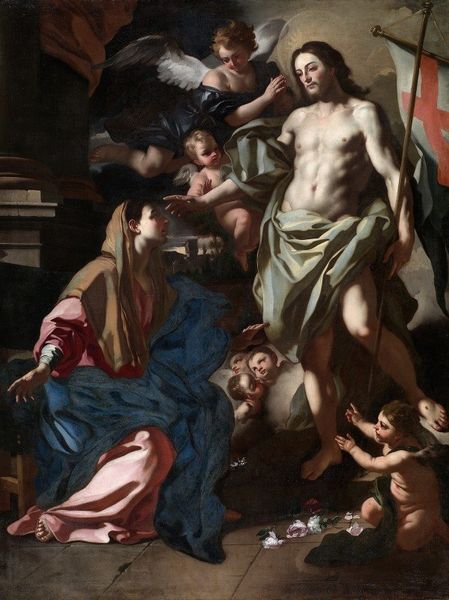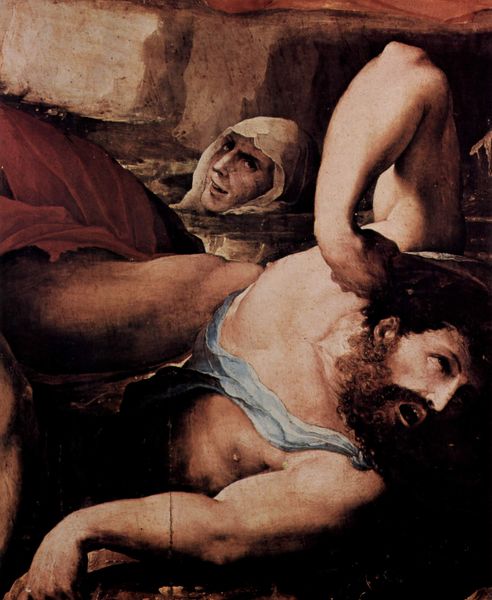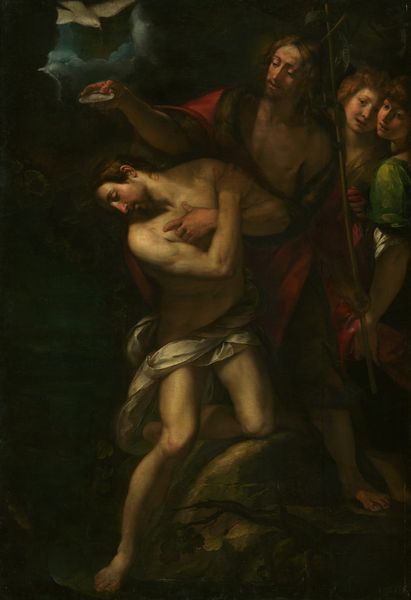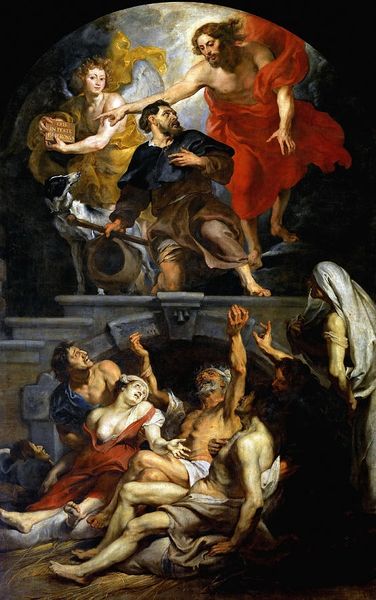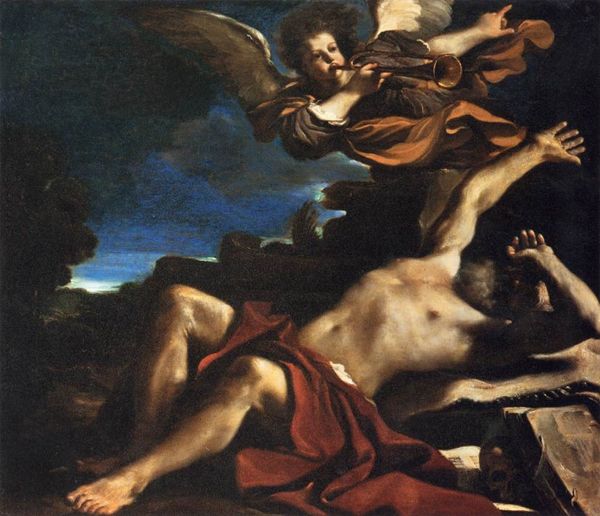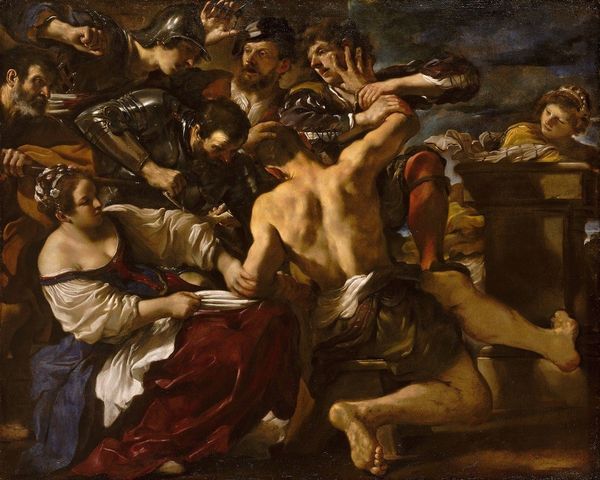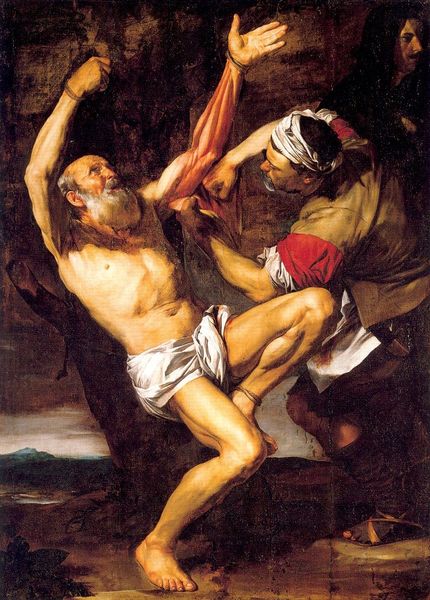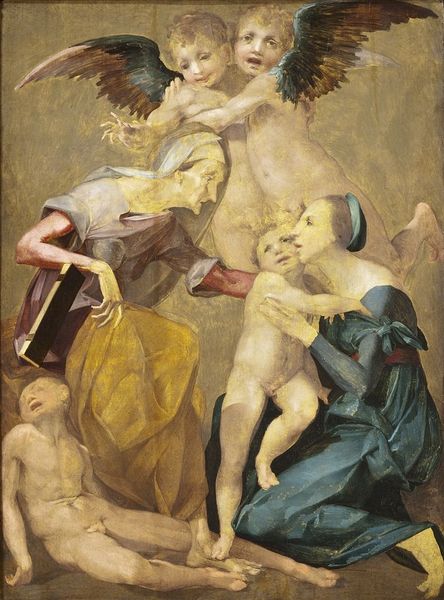
painting, oil-paint
#
portrait
#
venetian-painting
#
painting
#
oil-paint
#
mannerism
#
figuration
#
oil painting
#
history-painting
#
portrait art
Copyright: Public Domain: Artvee
Editor: So, this is Tintoretto's "Crowning With Thorns," painted in 1592 with oil. The density of the composition is striking; it's chaotic, even violent. What's your take on it? Curator: The chaos isn't accidental; it's a deliberate visual strategy. Think about the historical context: Venice in the late 16th century, grappling with social hierarchies and religious tensions. How does Tintoretto use the body, especially Christ's body, as a site of power and resistance within this climate? Consider too, how the halo might be read, not as purely devotional, but as a symbolic assertion of marginalized identities. Editor: That’s interesting. So you're seeing the violence inflicted on Christ not just as a religious narrative, but as a commentary on social injustice? Curator: Precisely. Mannerism often disrupted established Renaissance ideals, and in Tintoretto, we witness this upheaval translated into a politically charged visual language. What about the figures tormenting Christ—what do their postures, their active aggression, tell us about Venetian society at the time? Editor: I guess I hadn't really considered them in that way, but seeing them as representations of different power structures makes a lot of sense. So it's less about individual wickedness and more about systemic oppression? Curator: Yes, it compels us to reflect on these intersections. Also, notice the gaze of some figures; is Tintoretto asking us to implicate ourselves in the unfolding violence? Editor: That gives me a lot to think about regarding the intersectionality between art, social context, and power. Thanks. Curator: It is an honour to work with you, this dialogue encourages further engagement with this remarkable canvas and art.
Comments
No comments
Be the first to comment and join the conversation on the ultimate creative platform.
